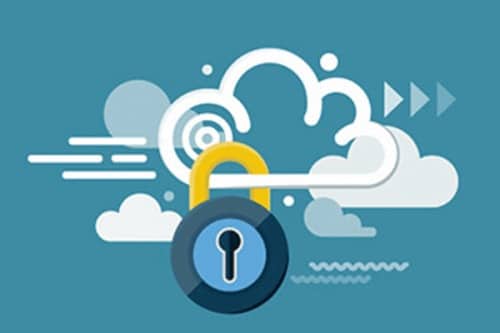This is a summary of an article written for Channel Futures by Fortinet’s VP of Americas Channels, Jon Bove. The entire article can be accessed here.
In today’s business world, it’s hard to be competitive without leveraging the cloud. By 2020, the number of enterprises that remain cloud-free will be less than ten percent. Given the business benefits to end-users, this should come as no surprise. However, there are other beneficiaries, too – namely, service providers who can leverage the cloud to provide faster, better services to their clients. As a Fortinet channel partner, this is your opportunity to help.
Managing your customer base in the cloud means you’re primed to help in a cloud-first world. Providing the managed services that customers need without having to travel to their location for troubleshooting can result in cost savings that will keep your brand competitive. Here’s a quick outlook of what’s happening right now in the evolving world of cloud and how Fortinet channel partners can help keep it secure.
Organizations are Struggling to Secure an Unplanned Cloud Environment
In the digital era, enterprises are constantly expanding their potential attack surfaces. Further, no two cloud environments run the same way, which makes securing them an incredibly complex task. And it’s also typical for multi-cloud environments to evolve ad hoc, without an overarching security strategy in place. There’s a reason for that: while your customers may find it easy to set up disparate services from different cloud providers, it’s not as easy to create or maintain security across the resulting patchwork of services. With each new app that’s adopted, your customers are introducing more risk while their corporate IT departments lose control of the flow of data. Even worse, these IT teams are already stretched to the limits of managing existing resources. Securing a rapidly expanding multi-cloud environment only adds to their challenges.
A Blurred Line of Security Responsibility with Cloud Providers
Complicating things further, cloud environments are structured with a shared responsibility model – meaning organizations must understand which components they are responsible for keeping secure and which are up to the provider. When the line of responsibility is unclear, there’s huge potential for something to fall through the cracks.
Generally speaking, once your customers have amended a cloud solution in any way – such as changing a configuration option – it is then their responsibility to secure it. They will need to sift through the resources the service provider offers and determine exactly which security requirements fall to them, and which will be handled by the service provider.
Fighting Automated Attacks
With sophisticated, automated cyberattacks on the rise, understanding where responsibility falls is a growing area of concern, especially as organizations rapidly expand and evolve their cloud environments. Today’s automated attacks not only happen faster than IT teams can respond; they often occur under the radar, meaning your customers often don’t even know there’s been a breach. And even if they’re able to discover these new attacks, they may not know how they happened, much less how to handle them. To minimize the impact of such cyber events, organizations need automated security solutions that protect across all potential entryways, even across a multi-cloud environment.
For Help, Organizations Can Turn MSSPs
Managed security service providers (MSSPs) can step in, offering security-as-a-service to their customers who struggle to manage and secure their disparate systems. By leveling up with automated security solutions, MSSPs can quickly respond to automated attacks occurring anywhere across their entire network. With MSSP-provided threat correlation and automated response and remediation, customers can be protected across their distributed environments with the flexibility to make dynamic adjustments as their cloud networks expand.
What’s more, MSSPs can even integrate their customers’ disparate cloud-based frameworks and security solutions that are deployed elsewhere. The result is a new level of visibility that’s required to keep data safe as it moves across and between platforms. Configured correctly, this security system will already have dealt with any breach by the time your customers learn of the event. Finally, when you choose to offer managed security services across complex cloud environments, you’re lending expertise and the right levels of focus on what has quickly become one of today’s largest business concerns: security in the cloud.
Fortinet’s Security Fabric framework and broad portfolio of integrated solutions not only span multi-cloud environments, they have also been configured to run as native cloud solutions, enabling them to take full advantage of the power and functionality of each cloud platform. In addition, they fully support the sort of tiered management and deployment requirements of MSSPs, allowing them to establish a low-touch, automated solution that maximizes profitability while also maximizing protections for their customers.
Final Thoughts
The cloud is a complex place, and its security landscape is even more complex. Organizations looking for help will turn to managed security service providers (MSSPs). As a channel partner, there is a growing opportunity for you to help by positioning Fortinet’s broad portfolio of integrated cloud solutions combined with your specialized expertise in planning, designing, implementing, and optimizing a solution designed for their specific needs.
If you enjoy reading this blog, you might enjoy reading Google Acquires CloudSimple To Bring VMware Customers To Its Cloud

